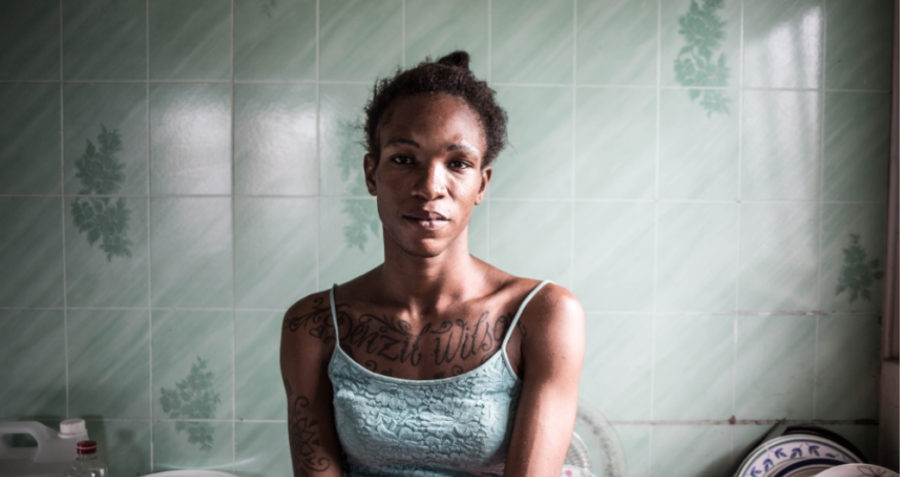World Health Assembly agrees to protect the ‘most vulnerable’ – but who are they?
 © Jason Florio for Frontline AIDS
© Jason Florio for Frontline AIDS
There is much to be celebrated about the outcome of last week’s virtual World Health Assembly, which brought together ministers and heads of state around a single resolution: the response to COVID-19.
What’s so significant is that the resolution, which was signed off by consensus with support from 130 Member States, embeds the COVID-19 response within the right to health, and commits to ensuring that human rights are protected and prioritised in responses to the outbreak. This provides a strong grounding for activists to hold their governments accountable, particularly around the rights of the most vulnerable.
Also important is that the resolution recognises the disproportionate impact of the pandemic on the poorest and most vulnerable, and specifically states that national COVID-19 responses must address the needs of the most vulnerable. There is an explicit requirement of governments to implement national action plans ‘ensuring respect for human rights and fundamental freedoms and paying particular attention to the needs of people in vulnerable situations […] and preventing insecurity, violence, discrimination, stigmatization and marginalization’.
Who are the ‘most vulnerable’?
But who are included in the ‘most vulnerable’? Although some vulnerable groups are explicitly mentioned in the resolution, such as children and adolescents, it offers no definition of who would be classed as ‘vulnerable’ and how to address their needs.
It’s therefore of utmost importance that governments, in their national COVID-19 responses, interpret ‘vulnerable people’ to include those who are already marginalised and therefore often invisible in official health strategies. We’re talking about sex workers, transgender people, men who have sex with men and other members of the LGBT community, and people who use drugs, as well as adolescent girls and young women. We know from decades of responding to HIV that these communities are at greater risk of being excluded from public health interventions due to stigma, discrimination, socio-economic marginalisation and criminalisation – the same challenges that are putting these groups at risk during the COVID-19 crisis. Their needs must be tackled as a priority within measures to meet the needs of all vulnerable groups.
We are already seeing how the pandemic, and measures to contain it, are affecting these groups, and how official COVID-19 responses are ignoring them. The COVID-19 response has disrupted supplies, limited personal movement and closed community clinics, leading to interruption to HIV services and anti-retroviral therapy. In some countries, sex workers – and others who work in the informal economy – are excluded from COVID-19 income support schemes. We’re also seeing greater exposure to human rights abuses, such as increased persecution of LGBT communities in some places.
As we have seen in the HIV response, the voices of the communities most affected have also been those best placed to respond. In a similar way, national responses to COVID-19 can be most responsive to the needs of marginalised people by including them in official decision-making processes, and by being led by their knowledge of effective mitigation measures.
It’s not just about health systems
During the World Health Assembly, Dr Tedros, director general of the WHO, pointed to the progress made on HIV, and reminded Member States that the response to COVID-19 must address the social, economic and broader determinants of health. This means taking action to strengthen not only the health system response, but finding ways to overcome social, economic or political barriers that prevent people from maintaining good health. That could mean providing medical care at no upfront cost to the service user, providing income support, or using community distribution of anti-retrovirals and other medicine instead of asking individuals to attend the health centre.
The international community has an important role to play.
- It must advocate for and provide funding to sustain the HIV response during the COVID-19 emergency. If resources are diverted from HIV to COVID-19, the already appallingly high numbers of new HIV infections will continue to soar.
- It must encourage governments to recognise and resource community-led service providers as an essential part of the health system, and support them to adapt their responses to tackle COVID-19. Community-led organisations are also vital for holding governments accountable for meeting the needs of the most marginalised amid the COVID-19 response.
- It must call out human rights violations against marginalised communities who are being targeted in the name of COVID-19 restrictions, and help to mobilise international support. It can also provide platforms to community advocates from marginalised communities so they can sustain attention to their needs in international decision-making spaces.
Tags
COVID-19HIV preventionPeople who are marginalised


